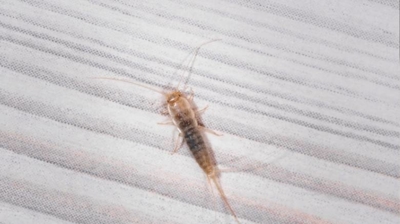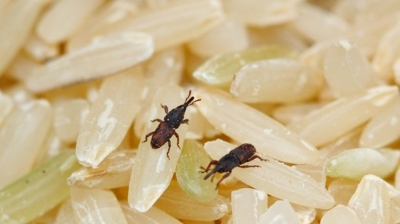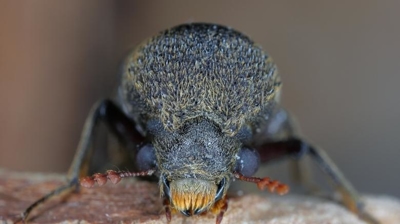
Mole Control Services

Are Moles Harmful?
Moles can be considered harmful in several ways, particularly in relation to lawns, gardens, and agricultural areas. Here are some of the primary concerns:
- Lawn and Landscape Damage – Moles create extensive tunnel systems just beneath the surface of the ground, leading to raised ridges, soft spots, and mounds of displaced soil (molehills). This can make lawns and gardens look unsightly and difficult to maintain.
- Root Disturbance – While moles primarily feed on insects and grubs, their tunneling can disrupt plant roots, leading to poor plant health or even death. This is especially problematic for delicate flowers, vegetable gardens, and young trees.
- Soil Erosion – The displacement of soil caused by mole tunneling can contribute to erosion, especially in areas with loose or sandy soil. This can lead to uneven terrain and drainage issues.
- Damage to Irrigation and Utility Lines – Moles may inadvertently damage underground irrigation systems, cables, and pipes while burrowing, leading to costly repairs.
- Attracting Other Pests – Mole tunnels create access points for other burrowing animals like voles and mice, which can then feed on plant roots, bulbs, and even crops.
- Hazardous Ground Conditions – The uneven ground caused by mole activity can create tripping hazards for people and animals, posing risks in residential yards, parks, and farmland.
- Agricultural Losses – On farms, mole activity can interfere with crop production by disrupting root systems, displacing seeds, and making the soil uneven for machinery.
While moles do provide some benefits—such as aerating soil and controlling insect populations—their presence can cause significant damage when left unchecked.
Learn more: Do Moles Bite?
Mole Control
Moles cause real, measurable property damage. Their tunneling uproots lawns, damages shallow-rooted plants, creates trip hazards, and over time can undermine irrigation lines, sprinkler heads, shallow foundations, and patios. For homeowners who value curb appeal (and for commercial properties), visible mole damage reduces perceived property value and can escalate into costly repairs. Minimizing that damage quickly is the main reason to act professionally rather than waiting.
“Mole activity” is often mistaken for voles, gophers, snakes, or simple grub damage. Misidentification leads to ineffective treatments. Our professionals accurately diagnose whether the problem is true moles (insectivores that follow earthworms/larvae), or surface/vegetation feeders. That determines the right tools and techniques — trapping placement, baiting strategies, or habitat modification — which is why our results are much more reliable than guesswork.
Our professionals bring expertise, specialized equipment, and access to effective tools and baits that are not readily available or even legal for general consumer use in some areas. Our experienced technicians read tunnel systems, soil types, and activity patterns to place traps or bait where they will work — not where the homeowner hopes. That reduces repeated visits and increases first-visit success rates.
We apply an integrated approach that minimizes environmental impact while maximizing effectiveness. If a control method requires a permit or has label restrictions, our licensed professionals handle it correctly.
Going with our professional services reduces repeat purchases of DIY mole control products, avoids botched attempts that worsen tunnels, and prevents a number of secondary costs (irrigation repairs, re-sodding, plant replacement). For many homeowners, the cost of our professional mole control more than pays for itself in avoided lawn repair alone.
Moles move quickly and their activity can be intermittent. Our pros get results faster by using proven methods and experience-based placement, which reduces the weeks/months of frustration homeowners face trying random methods. That convenience is especially valuable for busy households or commercial properties where aesthetics must be maintained.
Learn more: How To Get Rid Of Moles
Mole Appearance
Moles are small, burrowing mammals with distinctive physical characteristics that make them well-suited for their underground lifestyle. Here is what moles look like:
- Size and Body Shape: Moles are typically small animals, measuring about 4 to 7 inches (10 to 18 centimeters) in length, excluding their short tails. Their bodies are cylindrical and compact, with no noticeable neck.
- Fur: Moles have soft, velvety fur that is usually gray to black, although some species may have brown or even silvery fur. The fur helps them move easily through the soil.
- Eyes and Ears: Moles have very small eyes that are often hidden within their fur and are mostly vestigial, meaning they are not functional for vision. Their ears are also very small and are often covered by fur to prevent soil from entering.
- Snout and Mouth: Moles have long, pointed snouts with a tiny, almost invisible mouth. Their teeth are sharp and adapted for consuming insects and other invertebrates.
- Limbs and Claws: Moles have powerful front limbs with large, spade-like claws. These claws are their primary digging tools, allowing them to excavate soil efficiently. Their hind limbs are smaller and less developed, as they are primarily used for propulsion when moving through tunnels.
- Tail: Moles have short tails, typically ranging from 1 to 2 inches in length. The tail may have a few fine hairs, and it is used for balance rather than for digging.
- Sexual Dimorphism: In most mole species, males and females look quite similar, making it challenging to distinguish their sex based on physical characteristics alone. However, in some species, males may be slightly larger than females.
Moles have a unique and adapted appearance for their subterranean lifestyle. Their most distinctive features are their cylindrical bodies, velvety fur, strong front claws, small eyes, and pointed snouts, which collectively make them efficient diggers and hunters in the underground world.
Learn more: What Do Moles Look Like?
Learn more: Moles vs Voles
Where Are Moles Found?
Moles are primarily found in various parts of North America, Europe, and Asia. They tend to inhabit habitats with loose, moist soil that is conducive to burrowing. Here's where you might find moles:
- Gardens and Lawns: One of the most common places to find moles is in gardens and lawns. Their subterranean tunnels can create mounds of soil in these areas as they search for earthworms and insects.
- Meadows and Grasslands: Moles are also frequently found in natural grasslands and meadows where the soil is loose and populated with insects. They may create extensive tunnel systems in such environments.
- Farmlands and Agricultural Fields: In rural areas, moles can be found in farmlands and agricultural fields. While their tunneling can be a nuisance for farmers, they also help control insect populations that can damage crops.
- Woodlands and Forested Areas: Some mole species inhabit wooded areas and forested regions, especially in parts of Europe and Asia. They may be more common in deciduous or mixed forests with loose, moist soils.
- Wetlands and Riparian Zones: Certain species of moles are adapted to wetter environments. They can be found in wetlands, marshes, and along the banks of rivers and streams. These moles are well-suited to the moister, softer soils found in such areas.
- Urban and Suburban Areas: Moles can sometimes be found in urban and suburban environments, particularly in neighborhoods with green lawns and gardens. Their presence may lead to the creation of molehills and tunnels in these settings.
- Geographic Range: The specific species of moles you may encounter can vary based on your geographic location. Different species have adapted to different environments and regions, so the likelihood of encountering moles depends on your location.
While moles can be found in a variety of habitats, they are most active below ground and are seldom seen above the surface. If you suspect mole activity in your area, you may notice the telltale signs of their presence, such as molehills, surface ridges, and soil disturbances caused by their burrowing.
Mole Diet
Moles are insectivorous mammals, which means they primarily feed on insects and other invertebrates. Their diet consists of a wide range of small, underground-dwelling creatures. Here is what moles eat:
- Earthworms: Earthworms are a staple in the diet of moles. Moles are expert hunters of earthworms and can detect their presence in the soil through vibrations and scent. They use their strong front claws to dig tunnels and locate earthworms, which they immobilize with a quick bite.
- Insects: Moles consume a variety of insects, including beetles, grubs, ants, termites, caterpillars, and other small arthropods. They can detect the movement and vibrations of these insects in the soil and quickly capture them.
- Larvae: Many moles also eat the larvae of insects, such as beetle grubs and moth caterpillars. These larvae are often found in the soil and provide a nutritious food source for moles.
- Small Invertebrates: Moles may feed on other small invertebrates they encounter in their tunnels, such as spiders, millipedes, and centipedes.
- Small Vertebrates: While moles are primarily insectivores, they may occasionally consume small vertebrates like mice, shrews, and voles if they come across them in their tunnels. This is more common in some mole species than in others.
- Plant Matter (Occasionally): While moles are primarily carnivorous, they may occasionally ingest small amounts of plant material, such as seeds or root fragments, especially when foraging for insects disturbs the plant matter.
- Storage of Food: Moles are known to store captured insects and invertebrates in special underground chambers within their tunnels. These food stores help them during times when prey is less abundant.
Moles are well-equipped for their insectivorous diet, with sharp teeth for capturing and eating prey, highly sensitive snouts for detecting prey movements and vibrations, and strong front claws for digging and accessing their food sources. Their voracious appetite and burrowing behavior make them important regulators of insect populations in the ecosystems they inhabit.
Learn more: What Do Moles Eat?
Mole Life Cycle
The life cycle of moles involves various stages, from birth to adulthood, and is characterized by specific behaviors and adaptations. Here is an overview of the life cycle of moles:
- Birth and Early Development: Moles typically mate in late winter or early spring. After a gestation period of approximately 4 to 6 weeks, the female gives birth to a litter of 2 to 7 pups, depending on the mole species. Newborn moles are tiny, hairless, and blind, and they are entirely dependent on their mother for nourishment and care.
- Nursing and Maternal Care: The mother mole provides milk to her pups during their initial weeks of life. She constructs a special nesting chamber within her tunnel system to protect the young moles. The mother is highly attentive and ensures the pups are warm and well-fed during this vulnerable stage.
- Growth and Development: Over the course of several weeks, the young moles develop fur, their eyes open, and they become more active and curious about their surroundings. They gradually start to venture out of the nest and explore the tunnels within their mother's territory. The young moles learn essential survival skills from their mother, such as how to hunt for insects and dig tunnels.
- Independence: By the time the young moles are around 5 to 7 weeks old, they become more independent and are weaned from their mother's milk. They begin to establish their own tunnel systems or expand their mother's tunnels, depending on the species and their territorial behavior.
- Adult Life: Moles reach sexual maturity at various ages, depending on the species. This typically occurs at around 6 to 12 months of age. Once sexually mature, moles engage in mating activities. This is also the time when they may disperse from their natal territory to establish their own burrowing systems.
- Reproduction and Life Span: Adult moles continue the reproductive cycle by mating and giving birth to their own litters. The life span of moles varies by species, but in general, they live for 2 to 4 years in the wild. However, many moles do not survive to adulthood due to predation, accidents, or other factors.
The life cycle of moles can vary slightly depending on the species and environmental conditions. While the details presented here are a general overview, specific species of moles may have variations in their life cycle and behavior.

Hear From Our Happy Customers
-
"Great Communication"
Tech was on time, communication was great, and he accommodated my needs.
- Alonzo W. -
"Exceeds Expectations"
I can’t say enough positive things about this company... The tech that came out, Jarvis went above and beyond my expectations. Thank you guys, I will continue using your services.
- Jake M. -
"Very Knowledgeable"
The tech that arrived was courteous, professional, and very knowledgeable. He was Great.
- Uerial I. -
"Professional & Considerate"
I’m pleased with Miche services. Jarvis came today. Professional and considerate. Thank you!
- Judy B. -
"Fantastic & Patient"
Jarvis was fantastic and patient. He answered my questions with an in-depth explanation and addressed all of my areas of concern. Would love for him to be my assigned tech going forward. Well done!
- Yonnette M. -
"Wonderful Service"
Wonderful service. Jarvis is great. Took care of everything I needed. Thank you!
- Henry P.



